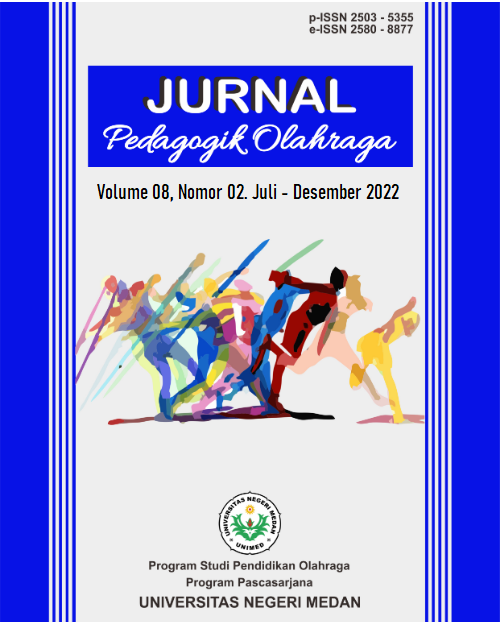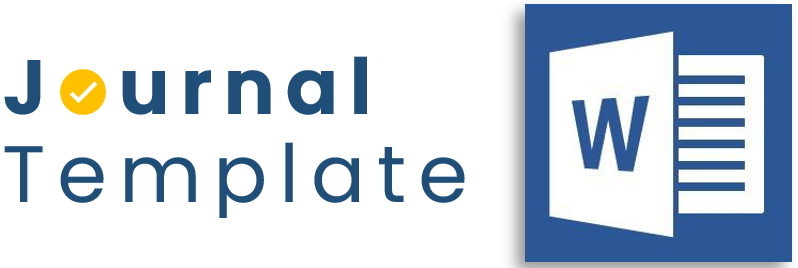AKTIVITAS FISIK DAN SCREEN TIME MAHASISWA PJKR IKTL: STUDI DESKRIPTIF TENTANG POLA GAYA HIDUP MAHASISWA DI ERA DIGITAL
Studi Deskriptif tentang Pola Gaya Hidup Mahasiswa di Era Digital
Keywords:
aktivitas fisik; screen time; gaya hidup sedentari; mahasiswa; era digital.Abstract
This study aimed to describe the patterns of physical activity and screen time among students of the Physical Education, Health, and Recreation (PJKR) Program at Institut Keguruan dan Teknologi Larantuka (IKTL) in the digital era. A quantitative descriptive study with a cross-sectional design was conducted involving 120 students selected through proportional random sampling. Data were collected using the International Physical Activity Questionnaire–Short Form (IPAQ-SF) to assess physical activity levels and an adapted Screen Time Questionnaire to measure daily screen exposure. The results showed that 85% of students were classified in the low category of physical activity, 15% in the moderate category, and none in the high category. Meanwhile, 68.3% of students reported screen time of four hours or more per day, with 35.8% spending 4–6 hours and 32.5% more than 6 hours. Crosstab analysis indicated that most students with low physical activity also had high screen time, reflecting sedentary lifestyle patterns. Furthermore, 52.5% of students reported that screen time often reduced their physical activity, and 72.5% admitted it disrupted their sleep. These findings highlight an imbalance between physical activity and digital device use, emphasizing the need for structured campus-based physical activity programs and digital health literacy initiatives. Keywords: physical activity, screen time, sedentary lifestyle, university students, digital era.References
Ajzen, Icek. 1991. “The Theory of Planned Behavior.” Tagliche Praxis 50(1):179–211.
Araya, Raden Cyntani, Yati Rukhayati, Imas Damayanti, Adang Suherman, Nur Indri Rahayu, Jajat Jajat, and Kuston Sultoni. 2022. “Hubungan Screen Time Dan Tingkat Aktivitas Fisik Mahasiswa Di Masa Covid-19 Dengan Health Related Quality of Life.” Medikora 21(1):31–40. doi:10.21831/medikora.v21i1.47258.
Kumban, Wannisa, Salila Cetthakrikul, and Anoma Santiworakul. 2025. “Smartphone Addiction, Screen Time, and Physical Activity of Different Academic Majors and Study Levels in University Students.” International Journal of Environmental Research and Public Health 22(2):1–13. doi:10.3390/ijerph22020237.
Pirwani, Neha, and Attila Szabo. 2025. “One-Year Update on Physical Activity and Smartphone Addiction in University Students: A Systematic Review of Novel Research.” Preventive Medicine Reports 57(July):103178. doi:10.1016/j.pmedr.2025.103178.
Prakoso, Anang Bagus, Nur Ahmad Arief, Abd Muin, and Nurul Kusuma Wardani. 2024. “Correlation between Screen Time and Physical Activity to Student’s Physical Fitness.” Jurnal Keolahragaan 12(2):164–74. doi:10.21831/jk.v12i2.76265.
Rosenstock, Irwin M., Victor J. Strecher, and Marshall H. Becker. 1988. “Social Learning Theory and the Health Belief Model.” Health Education & Behavior 15(2):175–83. doi:10.1177/109019818801500203.
Stiglic, Neza, and Russell M. Viner. 2019. “Effects of Screentime on the Health and Well-Being of Children and Adolescents: A Systematic Review of Reviews.” BMJ Open 9(1). doi:10.1136/bmjopen-2018-023191.
Twenge, Jean M., Jonathan Haidt, Jimmy Lozano, and Kevin M. Cummins. 2022. “Specification Curve Analysis Shows That Social Media Use Is Linked to Poor Mental Health, Especially among Girls.” Acta Psychologica 224(January):103512. doi:10.1016/j.actpsy.2022.103512.
Downloads
Published
How to Cite
Issue
Section
License

This work is licensed under a Creative Commons Attribution 4.0 International License.
Jurnal Pedagogik Olahraga is licensed under a Creative Commons Attribution 4.0 International License
Penulis yang menerbitkan jurnal ini menyetujui persyaratan berikut:
- Penulis memegang hak cipta dan memberikan hak jurnal untuk publikasi pertama dengan karya yang dilisensikan secara bersamaan di bawah Lisensi Atribusi Creative Commons yang memungkinkan orang lain untuk membagikan karya tersebut dengan pengakuan atas penulisan karya dan publikasi awal dalam jurnal ini.
- Penulis dapat membuat pengaturan kontrak tambahan yang terpisah untuk distribusi non-eksklusif dari versi terbitan jurnal dari karya tersebut (misalnya, mempostingnya ke penyimpanan institusional atau menerbitkannya dalam sebuah buku), dengan pengakuan dari publikasi awalnya di jurnal ini.
- Penulis diizinkan dan didorong untuk memposting karya mereka secara online (misalnya, di repositori institusional atau di situs web mereka) sebelum dan selama proses pengiriman, karena hal itu dapat mengarah pada pertukaran yang produktif, serta kutipan yang lebih awal dan lebih besar dari karya yang diterbitkan.









